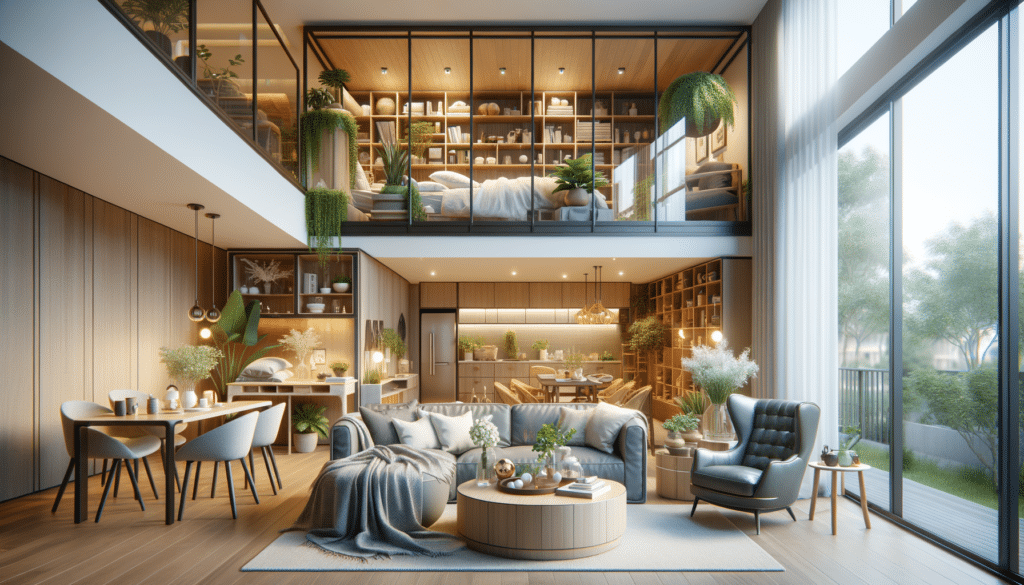Understanding the Needs of Residents Aged 55 and Over
As individuals age, their housing needs often change, requiring a shift in focus when it comes to selecting an appropriate living space. For those aged 55 and over, considerations such as accessibility, community engagement, and proximity to healthcare facilities become paramount. Understanding these needs is crucial in finding a home that not only meets practical requirements but also enhances quality of life.
Accessibility is a key factor, as mobility can become more challenging with age. Apartments designed with features such as step-free access, wider doorways, and elevators can significantly enhance daily living. Additionally, having amenities like grab bars in bathrooms and non-slip flooring can increase safety and independence.
Community engagement is another essential aspect. Many individuals in this age group appreciate living in communities that offer social activities and opportunities for interaction. This can help combat loneliness and promote mental well-being. Facilities such as common rooms, organized events, and clubs can play a vital role in fostering a sense of belonging and community spirit.
Proximity to healthcare facilities is also critical. As healthcare needs may increase with age, having easy access to medical services and emergency care provides peace of mind. Apartments located near hospitals, clinics, or with on-site wellness services can be highly beneficial.
Exploring Housing Options for Those 55 and Over
The housing market offers several options tailored to the needs of individuals aged 55 and over. These include independent living communities, age-restricted apartments, and senior co-housing. Each option provides unique benefits and considerations that cater to varying preferences and lifestyles.
Independent living communities are designed for seniors who wish to maintain an active lifestyle without the burdens of home maintenance. These communities often provide a range of amenities, such as fitness centers, dining options, and transportation services, fostering a convenient and engaging environment.
Age-restricted apartments offer a more traditional living arrangement but with age-specific accommodations. These can include enhanced security features, social programs, and supportive services. They provide an excellent balance of independence and community.
Senior co-housing is a growing trend that emphasizes collaborative living. Residents have private living spaces but share common areas and responsibilities. This option appeals to those seeking a strong sense of community and mutual support.
Financial Considerations for Older Adults
Financial planning is a crucial aspect of selecting suitable housing for individuals aged 55 and over. Budget constraints, fixed incomes, and potential healthcare expenses must all be taken into account when choosing an apartment.
It’s essential to evaluate the total cost of living, including rent, utilities, and additional services or amenities. Many communities offer tiered pricing structures, allowing residents to select the level of service that fits their budget.
Understanding and utilizing available financial assistance programs can also be beneficial. Various government and non-profit organizations offer subsidies or financial aid to help seniors afford comfortable housing. Researching these options can provide significant financial relief.
Additionally, considering long-term financial stability is important. As healthcare needs may increase, planning for future expenses ensures continued comfort and security.
Design and Amenities That Enhance Living Experience
The design and amenities of an apartment can greatly influence the living experience for those aged 55 and over. Thoughtful design elements and convenient amenities can transform a living space into a welcoming and functional home.
Apartments with open floor plans, ample natural lighting, and easy-to-navigate layouts promote comfort and accessibility. Kitchens and bathrooms designed with seniors in mind, featuring adjustable countertops and accessible storage, enhance usability.
On-site amenities such as fitness centers, swimming pools, and wellness programs encourage active lifestyles and social interaction. Many communities also offer transportation services, making it easier for residents to attend appointments and participate in community events.
Technology integration is another aspect gaining popularity. Smart home features, emergency alert systems, and virtual assistance can provide additional safety and convenience.
Location Considerations for Older Adults
Choosing the right location is a vital part of finding an apartment for those aged 55 and over. The surrounding neighborhood can greatly impact daily life, influencing accessibility to services, social opportunities, and overall safety.
Proximity to family and friends is often a top priority, as maintaining relationships contributes to emotional well-being. Being close to loved ones can also provide additional support and companionship.
Access to public transportation and essential services such as grocery stores, pharmacies, and medical facilities is crucial. A location with convenient transportation options enhances independence and ease of access to necessary services.
Safety is another significant consideration. Choosing a neighborhood with a low crime rate and good lighting can provide peace of mind. Additionally, areas with walking paths, parks, and recreational facilities promote an active and healthy lifestyle.





